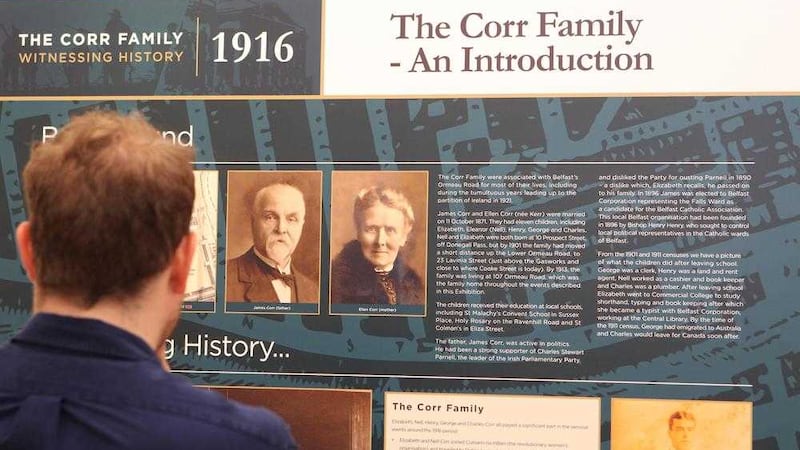THE different paths taken by five brothers and sisters from Belfast's Ormeau Road during the turbulent period around 1916 are to take centre stage at a new exhibition.
War medals and a Tara Brooch made from melted spoons are among the artefacts due to go on display from Wednesday at the Ulster Museum.
The exhibition looks at the varying routes taken by five siblings from the Corr family who either became involved in the First World War or the Easter Rising.
Using original sources and personal accounts from the family, the exhibition takes visitors through the experiences of Elizabeth, Nell, Henry, George and Charles.
Entitled 'The Corr Family - Witnessing History', it gives a fascinating insight into events in Belfast, Ireland and the world during that time.
Sisters Elizabeth and Nell joined the revolutionary women's organisation Cumann na mBan and Henry was part of the Ulster mobilisation for the Easter Rising.
However their brothers George and Charles both fought in France in 1916; George with the Australian army and Charles with the Canadian army.
The exhibition contains a number of important artefacts including medals awarded to Elizabeth and Nell, accounts of Easter Week 1916 written by Elizabeth and photographs and a Tara Brooch made from melted spoons by republican prisoners in Crumlin Road Gaol, which was presented to her around 1918.
Elizabeth and Nell joined Cumann na mBan and travelled to Dublin to meet the leaders of the 1916 Easter Rising on the morning of the rebellion.
The sisters remained active throughout the revolutionary period, visiting Terence MacSwiney - who later died on hunger strike in Brixton prison in 1920 - in Crumlin Road Gaol and campaigning in Longford to secure the election of Joseph McGuinness, a republican prisoner being held in Lewes Prison, Isle of Wight.
Henry joined the Irish Volunteers and was part of the Ulster mobilisation for the Easter Rising.
George went to Australia and joined the Australian Army, fighting in France in 1916.
Three months after the 1916 Rising, George was killed in the Battle of the Somme fighting with the 54th battalion of the Australian Infantry.
Charles went to Canada and fought in France with the Canadian Army during 1916, being gassed and wounded during the fighting.
Dr Robert Whan, National Museums Northern Ireland's history curator, said it was a fascinating look back at the "pivotal year of 1916".
"Elizabeth's and Nell's story reveals a hidden history around the contribution of women to public life and politics at the time," he said.
"While the story of George and Charles Corr gives an additional dimension to the history of the Corr family, placing events in Ireland within the wider global context and showing, through the example of this family, that history is complex and multi-faceted."
He added: "We are delighted to add this insightful exhibition to our extensive events and exhibitions programme for this centenary year".
The exhibition opens today and runs until August 23 with free admission to the Ulster Museum.








